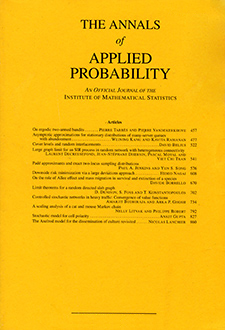Abstract
In this article, we consider the so-called modified Euler scheme for stochastic differential equations (SDEs) driven by fractional Brownian motions (fBm) with Hurst parameter $\frac{1}{3}<H<\frac{1}{2}$. This is a first-order time-discrete numerical approximation scheme, and has been introduced in [Ann. Appl. Probab. 26 (2016) 1147–1207] recently in order to generalize the classical Euler scheme for Itô SDEs to the case $H>\frac{1}{2}$. The current contribution generalizes the modified Euler scheme to the rough case $\frac{1}{3}<H<\frac{1}{2}$. Namely, we show a convergence rate of order $n^{\frac{1}{2}-2H}$ for the scheme, and we argue that this rate is exact. We also derive a central limit theorem for the renormalized error of the scheme, thanks to some new techniques for asymptotics of weighted random sums. Our main idea is based on the following observation: the triple of processes obtained by considering the fBm, the scheme process and the normalized error process, can be lifted to a new rough path. In addition, the Hölder norm of this new rough path has an estimate which is independent of the step-size of the scheme.
Citation
Yanghui Liu. Samy Tindel. "First-order Euler scheme for SDEs driven by fractional Brownian motions: The rough case." Ann. Appl. Probab. 29 (2) 758 - 826, April 2019. https://doi.org/10.1214/17-AAP1374
Information





